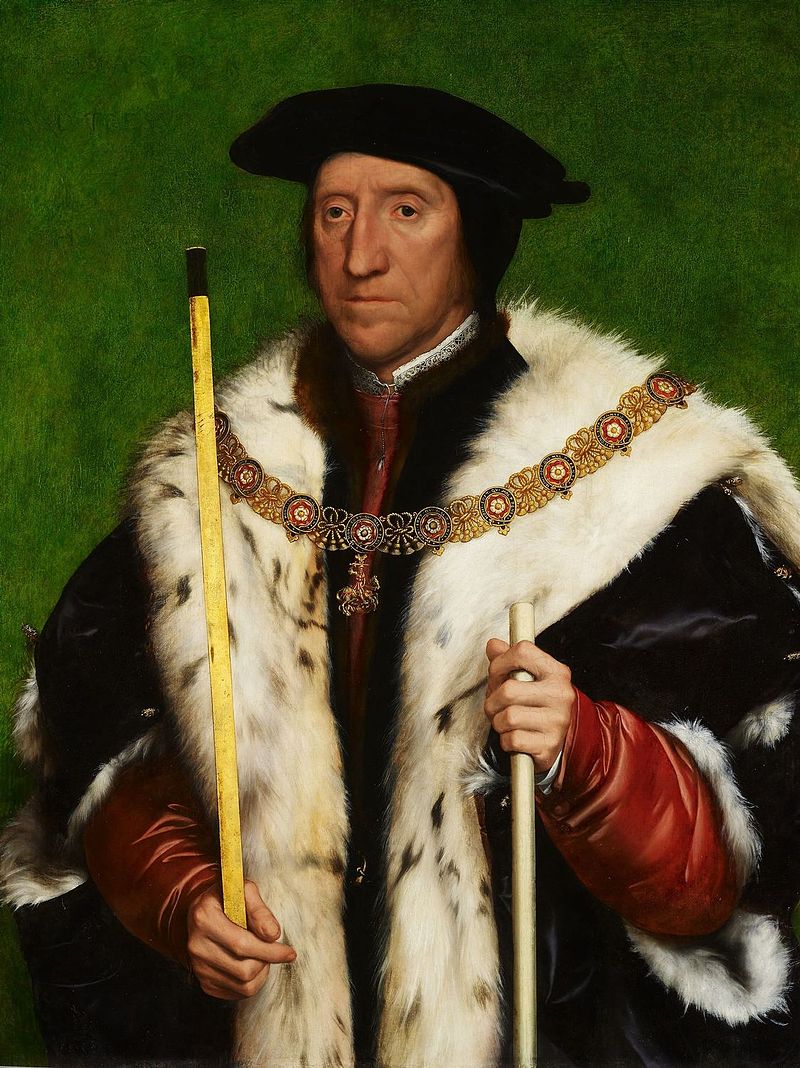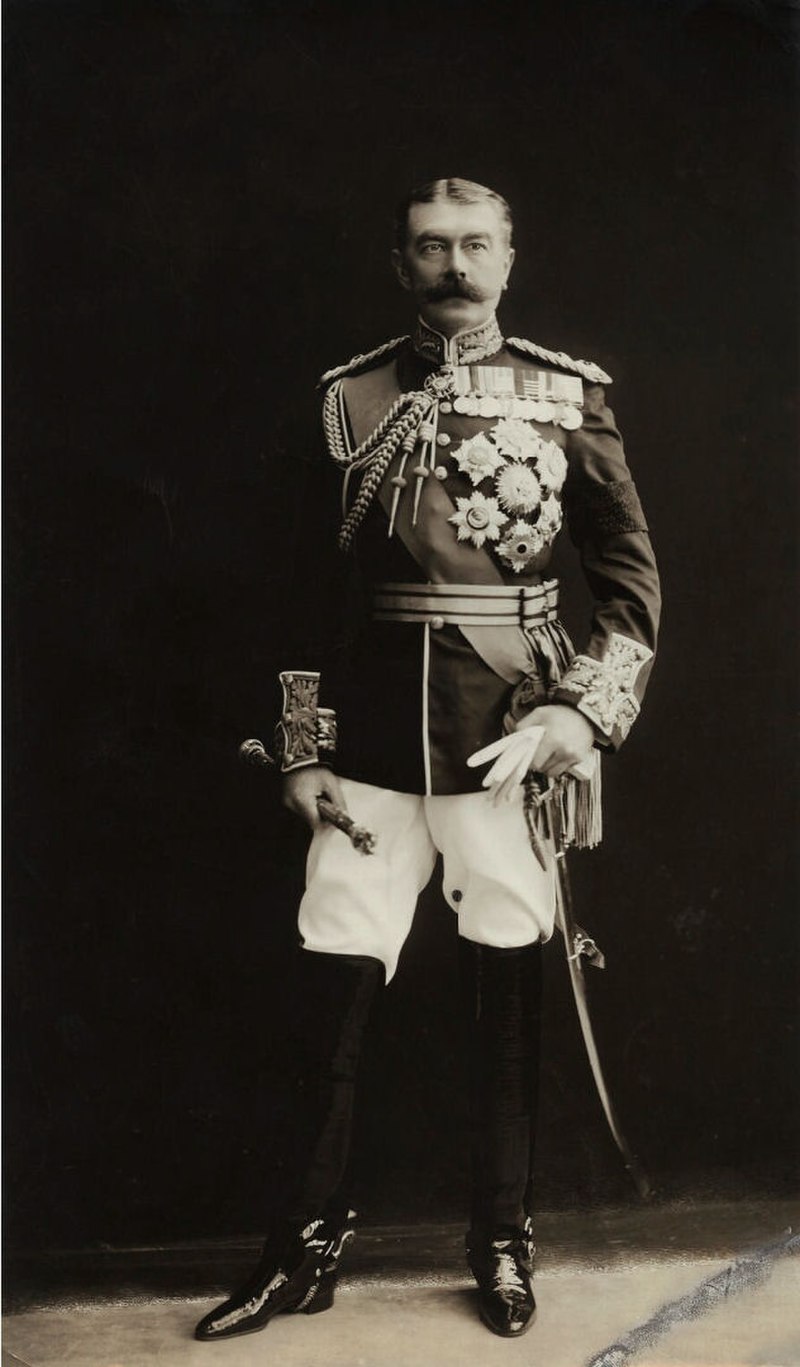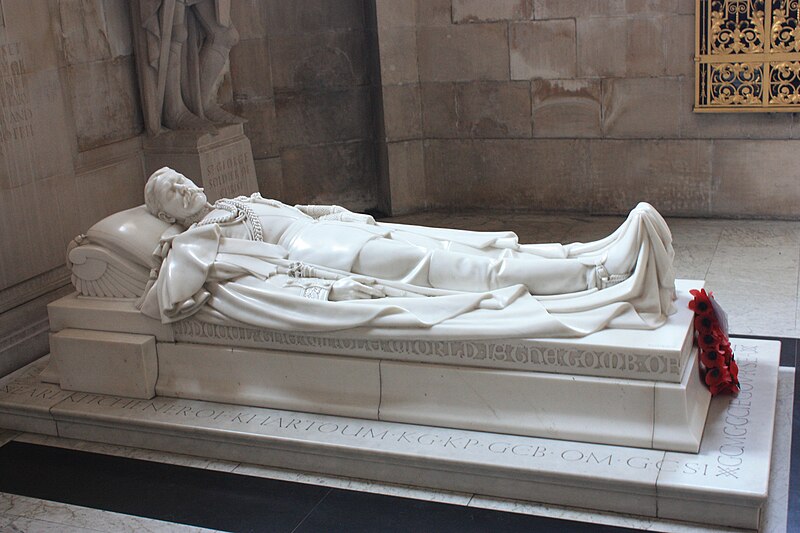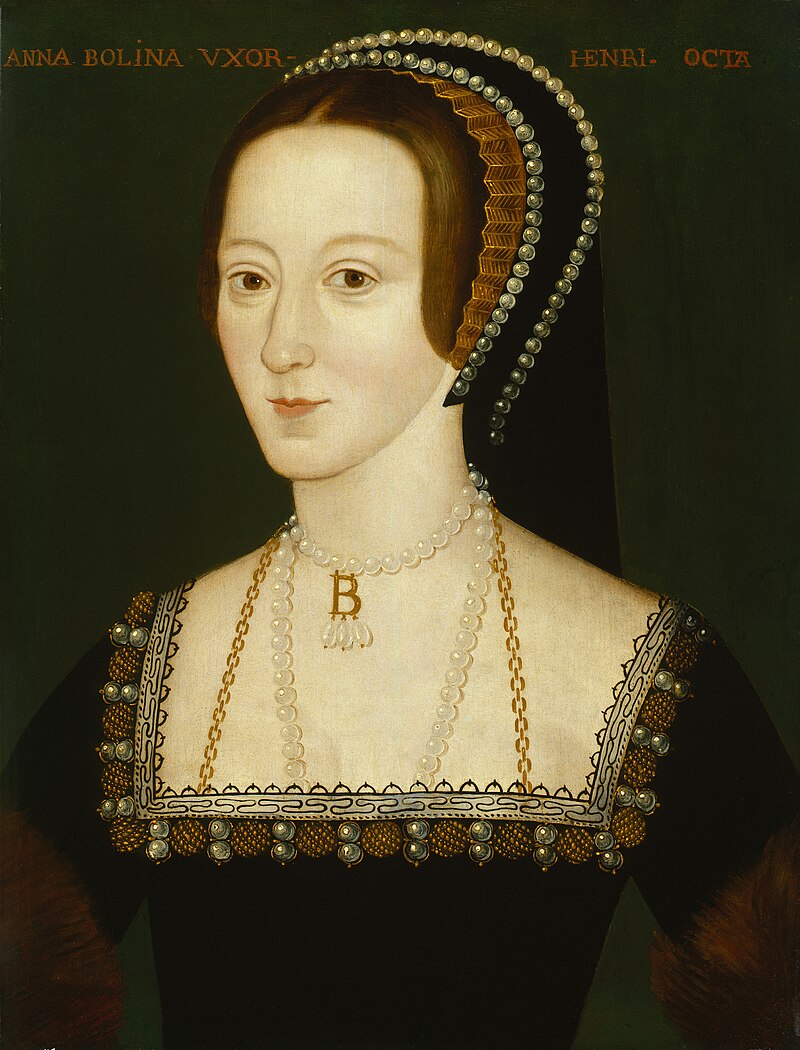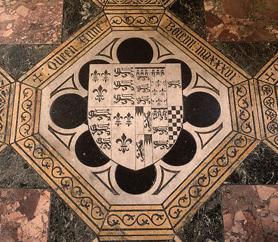by Susan Flantzer © Unofficial Royalty 2016

Queen Mary I of England; Credit – Wikipedia
Excluding the disputed reigns of Empress Matilda in the 12th century and Lady Jane Grey, Mary’s predecessor, Queen Mary I was the first queen regnant of England. Mary was born on February 18, 1516, at the Palace of Placentia (Greenwich Palace), the only child of King Henry VIII of England and his first wife Catherine of Aragon to survive infancy. Mary had two much younger half-siblings from two of her father’s other marriages: Queen Elizabeth I of England and King Edward VI of England.
On February 21, 1516, Mary was christened at the Church of the Observant Friars in Greenwich, London. Her godparents were:
Margaret Pole, 8th Countess of Salisbury was appointed Mary’s governess in 1520 and played an important role in Mary’s upbringing. Margaret Pole was one of the few surviving members of the Plantagenet dynasty after the Wars of the Roses. Her father was George, Duke of Clarence, third son of Richard Plantagenet, 3rd Duke of York, the York claimant during the Wars of Roses until his death at the Battle of Wakefield in 1460. Margaret’s paternal uncles were the Yorkist monarchs King Edward IV and King Richard III. Margaret’s mother was Lady Isabel Neville, daughter of Richard Neville, 16th Earl of Warwick (the Kingmaker of the Wars of the Roses) who was also killed at the Battle of Wakefield. Margaret’s maternal aunt was Anne Neville who was married to King Henry VI’s only child, Edward of Westminster, Prince of Wales until his death at the Battle of Tewkesbury, and then Anne Neville married King Richard III. At the command of King Henry VIII, Margaret Pole was beheaded in a horrific manner when she was 67. Her son Cardinal Reginald Pole was the Archbishop of Canterbury during Mary’s reign.
Mary resembled both her parents, who had blue eyes, fair complexions, and reddish-golden hair. Like her father King Henry VIII, Mary’s mother Catherine of Aragon was descended from the House of Plantagenet. Catherine’s great-grandmother Catherine of Lancaster, Queen of Castile and her great-great-grandmother Philippa of Lancaster, Queen of Portugal were daughters of John of Gaunt, a son of King Edward III of England.

Queen Mary I, attributed to Lucas Horenbout (or Hornebolte), watercolour on vellum, circa 1525, NPG 6453 © National Portrait Gallery, London
Mary was well educated and studied Greek, Latin, French, Italian, science, and music. Henry VIII was disappointed that Mary was not a male, however in 1525, he sent her for three years to Ludlow Castle on the border of Wales to preside, presumably in name only, over the Council of Wales and the Marches. This was the same castle that Catherine of Aragon and her first husband, Arthur, Prince of Wales (Henry VIII’s elder brother) were sent to after their marriage, and it is where Arthur died. Mary received many of the dignities of a Prince of Wales and there is evidence that she was sometimes referred to as Princess of Wales, despite never being invested with the title. During Mary’s childhood, there were some tentative marriage plans to King François I of France and her first cousin, Charles V, Holy Roman Emperor (also King of Spain, Archduke of Austria, Lord of the Netherlands, Duke of Burgundy) but nothing ever came of these plans.
By the time Catherine of Aragon turned 40 in 1525, it was unlikely that she would produce the male heir that Henry yearned for. Henry had three options. He could legitimize his illegitimate son Henry FitzRoy. He could marry his daughter Mary and hope for a grandson. He could reject Catherine and marry someone of childbearing age. Henry became convinced that his marriage was cursed because Leviticus 20:21 says, “And if a man shall take his brother’s wife, it is an unclean thing: he hath uncovered his brother’s nakedness; they shall be childless.” Around the same time, Henry became enamored of Anne Boleyn, a lady-in-waiting to Catherine, and Henry began pursuing her.
Henry instructed Cardinal Wolsey to start negotiations with the Vatican to have his marriage to Catherine annulled. Catherine put up a valiant fight to save her marriage and was supported by her nephew Charles V, Holy Roman Emperor. After several long years of negotiations, Cardinal Wolsey failed to obtain the annulment incurring the anger of Anne Boleyn, who brought about Wolsey’s dismissal as Chancellor. A far more reaching consequence was Henry’s break with Rome which was to lead to the Reformation in England and the establishment of the Church of England. In 1533, Henry nominated Thomas Cranmer as Archbishop of Canterbury and in May 1533, Cranmer declared that because Henry and Catherine’s marriage was against the law of God, it was null and void. Catherine had testified that she and Arthur had never had physical relations.

Catherine of Aragon; Credit – Wikipedia
Catherine was banished from the court and Henry refused her the right to any title but “Dowager Princess of Wales” in recognition of her position as his brother’s widow. She was forbidden to see her daughter Mary. Catherine suffered these indignities with patience and told her women not to curse the new queen, Anne Boleyn. She spent most of her time doing needlework and praying. Catherine refused to accept the 1533 Act of Succession which made her daughter Mary illegitimate and made Anne Boleyn’s daughter Elizabeth Henry’s successor. Mary was sent to Hatfield House to live in her infant half-sister’s household. She seems to have no grudge against Elizabeth and had genuine sisterly feelings. By 1535, with no hope of ever seeing her daughter Mary, who suffered great humiliation at the court of Anne Boleyn, Catherine of Aragon’s health deteriorated and she was taken to Kimbolton Castle, where she died on January 7, 1536, at the age of 50.
After the execution of her father’s second wife Anne Boleyn, Mary was reconciled to her father with the help of his third wife Jane Seymour. However, Mary was forced into acknowledging that her parents’ marriage had been unlawful and that therefore, she was illegitimate. In addition, she was forced into acknowledging, at least outwardly, that her father was the Head of the Church of England. Mary remained true to the Roman Catholic Church. When her half-brother the future King Edward VI was born to Jane Seymour in 1537, Mary was one of his godparents and then acted as the chief mourner at the funeral of Jane Seymour, who died as a result of childbirth complications.

Mary in 1544; Credit – Wikipedia
Through the influence of Catherine Parr, Henry VIII’s sixth and final wife, the family became closer. Catherine Parr, a kind stepmother to Henry’s three children, was influential in Henry’s passing of the Third Succession Act in 1543 that restored both his daughters, Mary and Elizabeth (who had been removed from the succession after the execution of her mother Anne Boleyn), to the line of succession to the throne. King Henry VIII died in 1547 and was succeeded by his 9-year-old son King Edward VI. Henry’s three children remained on friendly terms despite their great differences in age and religious belief. When the 1549 Act of Uniformity made the use of the new Book of Common Prayer mandatory, Mary refused to comply and continued to have the Roman Catholic Latin Mass said in her household.
As 15-year-old King Edward VI lay dying, probably of tuberculosis, in the late spring and early summer of 1553, many feared that the succession of his Catholic half-sister Mary would spell trouble for the English Reformation. At that time, the succession to the throne according to the Third Succession Act looked like this:
1) Mary, daughter of Henry VIII and Catherine of Aragon
2) Elizabeth, daughter of Henry VIII and Anne Boleyn
3) Duchess of Suffolk (Lady Frances Brandon), daughter of Mary Tudor (daughter of King Henry VII)
4) Lady Jane Grey, daughter of Frances Brandon
5) Lady Catherine Grey, daughter of Frances Brandon
6) Lady Mary Grey, daughter of Frances Brandon
7) Lady Margaret Clifford, daughter of Countess of Cumberland (born Lady Eleanor Brandon, daughter of Mary Tudor)
Earlier in 1553, John Dudley, 1st Duke of Northumberland and Lord Protector of the Realm had arranged the marriage of his son Guildford and Lady Jane Grey, number four in the line of succession. What role the Duke of Northumberland played in what followed is still debated, but surely he played a big part in the unfolding of what happened. King Edward VI composed a document “My devise for the succession” in which he passed over his half-sisters and the Duchess of Suffolk (Frances Brandon). Edward meant for the throne to go to the Duchess’ daughters and their male heirs. The Duke and Duchess of Suffolk were outraged at the Duchess’ removal from the succession, but after a meeting with the ailing king, the Duchess renounced her rights in favor of her daughter Jane. Many contemporary legal experts believed the king could not contravene an Act of Parliament without passing a new one that would have established the altered succession. Therefore, many thought that Jane’s claim to the throne was weak. Apparently, Jane did not have any idea of what was occurring.
After great suffering, King Edward VI died on July 6, 1553, at Greenwich Palace. On July 9, Lady Jane Grey was told she was Queen of England, and reluctantly accepted the fact. However, the Privy Council switched their allegiance from Jane to Edward’s sister Mary and proclaimed her Queen on July 19, 1553. Mary arrived triumphantly in London on August 3, 1553, accompanied by her half-sister Elizabeth and a procession of over 800 nobles and gentlemen. Ultimately, Lady Jane, her husband, her father, and her father-in-law would all lose their heads.
On October 1, 1553, Queen Mary I of England was crowned at Westminster Abbey by Stephen Gardiner, Bishop of Winchester, whom she had released from the Tower of London upon her accession to the throne. Gardiner also was appointed Lord Chancellor and held that position until he died in 1555.

Queen Mary I after Anthonis Mor, oil on panel, 1555, NPG 4174 © National Portrait Gallery, London
Mary was 37 and needed to marry and produce an heir to supplant her Protestant sister Elizabeth. Edward Courtney, 1st Earl of Devon, a Plantagenet descendant was suggested. However, Mary had her heart set on marrying Prince Philip of Spain (later King Philip II of Spain), the only son of Mary’s first cousin Charles V, Holy Roman Emperor. Philip was a widower and was eleven years younger than Mary. Parliament, backed by Gardiner, begged her to reconsider fearing the threat a marriage to a foreign royal might have for English independence. When Mary insisted on marrying Philip, a rebellion broke out, led by Thomas Wyatt, to depose Mary in favor of her half-sister Elizabeth. Wyatt marched on London but was defeated and executed.
Mary and Philip were married at Winchester Cathedral on July 25, 1554. Mary insisted that Philip receive the title of King and that all official documents were to be in both their names. The marriage was not successful. Although Mary was in love with Philip, he found her repugnant. In September 1554, Mary thought she was pregnant and continued to exhibit signs of pregnancy until July 1555, when her abdomen returned to normal. There was no baby. After 14 months of marriage, Philip returned to Spain in August 1555. Mary was heartbroken and went into a deep depression. Philip did return to England in 1557 and was happily received by Mary. Philip wanted England to join Spain in a war against France. Mary agreed and the result was the loss of Calais, England’s last possession in continental Europe. Philip left England in July 1557, never to return. Mary said of these losses, “When I am dead, you will find the words ‘Philip’ and ‘Calais’ engraved upon my heart.”

Mary and her husband Philip, Bedford Collection, Woburn Abbey; Credit – Wikipedia
Throughout her reign, Mary was steadfast in her determination to restore the Roman Catholic religion to England. Edward VI’s religious laws were abolished during Mary’s reign, and her legitimacy was asserted. During Mary’s reign, nearly 300 Protestants were burned at the stake for heresy. Included in this number were the famous three Oxford Martyrs: Thomas Cranmer, Archbishop of Canterbury; Hugh Latimer, Bishop of Worcester; and Nicholas Ridley, Bishop of London. They were burned at the stake outside Balliol College in Oxford. There is a marker on the street marking the site of the executions. In addition, their names are on a plaque in the University Church of St Mary the Virgin in Oxford, where they were tried, along with names of both Protestant and Catholic victims of the Reformation who lived in Oxfordshire, taught at the University of Oxford, or were brought to Oxford for execution.

Plaque in the University Church of St Mary the Virgin in Oxford; Photo Credit – Susan Flantzer
In the latter part of her reign, Mary relied heavily on Cardinal Reginald Pole, the last Catholic Archbishop of Canterbury and the son of her governess Margaret Pole, 8th Countess of Salisbury. Pole acted as the Pope’s legate in Mary’s attempted reconciliation of the Church of England with Rome. In November 1558, Mary and Pole fell ill during an influenza outbreak. Mary had become weak and ill in May 1558, possibly from ovarian cysts or uterine cancer. Both Mary and Cardinal Pole died on November 17, 1558. Mary wanted to be buried with her mother but was buried in Westminster Abbey in a vault she would eventually share with her Protestant sister Elizabeth. The tomb erected above only has Elizabeth’s effigy, but King James I, Elizabeth’s successor, ordered this to be inscribed upon the tomb in Latin: Regno consortes et urna, Hic obdorminus Elizabetha et Maria sonores in spe resurrectionis – Partners both in throne and grave, here we, Elizabeth and Mary, rest as sisters, in hope of our resurrection.

Tomb of Mary I and Elizabeth I; Photo Credit – Wikipedia
This article is the intellectual property of Unofficial Royalty and is NOT TO BE COPIED, EDITED, OR POSTED IN ANY FORM ON ANOTHER WEBSITE under any circumstances. It is permissible to use a link that directs to Unofficial Royalty.
England: House of Tudor Resources at Unofficial Royalty
























